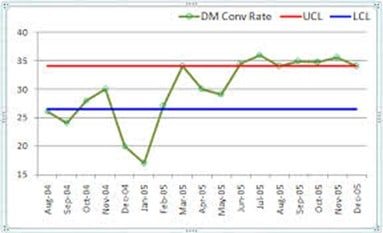The Myth of the Perfect Process
by Phil La Duke – first published here: https://philladuke.wordpress.com/2015/09/14/the-myth-of-the-perfect-process/
Phil says: Whether you believe that safety is the result of personal choices or a robust system too many of us labor under the mistaken belief in the "perfect process". In this week’s post I explore the myth of both the perfect process and perfect performance. I hope you will give it a read and tell me what you think.

Obviously, (or perhaps not given some of the guff I am given by people selling pixie dust that magically transform human variability into robot-like precision) the more manual the operation the more natural variation in the process because people tend to vary greatly in size, shape, aptitude, skills, and attitude, but even robots make mistake.
There Are Limits And Then There Are Limits
I have written about Geometric Dimensioning and Tolerancing, tolerance stacking, and how variance plays into safety before, but I find that few safety professionals understand GD&T and fewer still care. That’s unfortunate because it’s fascinating, and something that safety professionals really need to understand. Every process has tolerances that it must make to be acceptable. Think of a bottle of water. The bottle and the bottle cap are manufactured separately and later joined in the bottling process. The outer rim of the mouth of the bottle must be a very specific size, as must the inner rim, as must the inner rim of the bottle cap, etc. Tolerance is typically expressed as x + or – y. If the bottle cap is too small or too large (i.e. outside the upper or lower limits) it won’t fit on the bottle. Similarly if the bottle itself is too large or too small it will likewise useless. But what if the bottle cap is just a tiny bit big and the bottle is just a tiny bit small? In this case the tolerances have stacked (more and more variability have caused a problem because while the original specification identified how big or little a cap could be it failed to consider what would happen if BOTH the bottle and cap were out of specification. Now think about something far more complex than a bottle, say an automobile, where there are thousands of critical tolerances that must be considered.
What’s Any Of This Have To Do With Safety?
I understand that most of you don’t come to this blog looking for information on GD&T, or Tolerance Stack, or any of this other engineering crap, so why am I talking about it? Well consider a process at your site or within your company. Assuming you have the best engineering department available you would likely have standard operating procedures, but have you asked yourself who exactly the process had in mind? How much force is acting on the body when a person does the job? How much of this force can an average person withstand before his or her knees, back, elbows, or other body parts give out? In other words what forces act on the body and what are the tolerances of both the body and the process. There are some great companies out there that do ergonomic evaluations and that can calculate these figures for you, and there are some human factors evaluations that can test individual’s abilities to perform at a given specifications. Both of these services, used together can give you the bottle and bottle cap numbers, figuratively speaking. But is that enough? While it makes sense that doing this kind of analysis would return a safer workplace, remember this only is dealing with a process that is under control and people that are operating within a normal bell-shaped curve.
Triggers and Trigger Finger
I am a strong proponent of both Ergonomics and Human Factors Engineering, but let’s not all run off half-cocked. Continuing our bottle and bottle cap analogy, would we be successful by establishing a process and expecting the equipment that makes the bottles and caps to follow it? Of course not, and yet in too many cases ergonomic studies are only ordered for processes that have already hurt someone and even the most sophisticated Human Factors programs tend to measure people’s ability to do a job before they are hired (or more likely as part of a post offer qualification) so processes that are most likely to hurt people tend to only be addressed once someone has been harmed, and people’s on-going ability to do a job are seldom evaluated. In effect, even in the best circumstances we only have a single snap shot of risk.
It’s A Start
I’m not knocking companies whose safety management system has reached this height, it’s an important accomplishment but it really doesn’t provide us with as much protection as you might think, and let’s face it most of us haven’t come anywhere close to this level of sophistication. But even on a smaller scale many of us don’t recognize that we can have all the protection in the world but if our process is filled with variation the risk of injuries can still remain great.


Do you have any thoughts? Please share them below